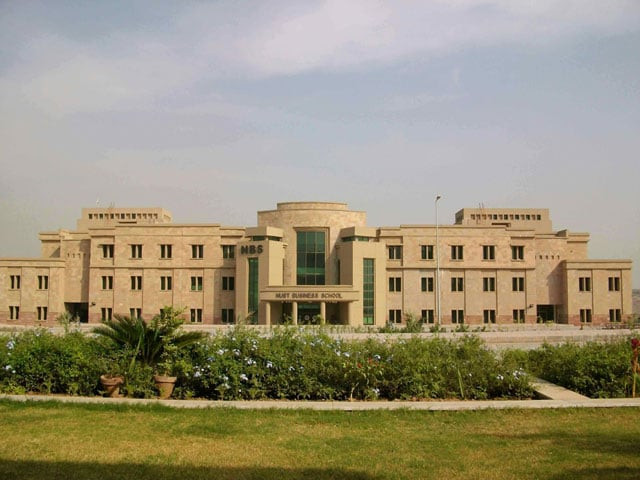Six Pakistani universities among world's top 700 institutes
Nust remains country’s highest-ranked institute

Photo shows building of NUST Business School in Islamabad. PHOTO: EXPRESS / AFSANA AFSAR
National University of Science and Technology (Nust) continues to be the country’s highest-ranked institute, remaining in the 501-550 band.
Lahore University of Management Sciences (Lums) and Quaid-i-Azam University (QAU) are ranked second and third respectively.
Here’s how 6 Pakistani universities ranked worldwide
The three new Pakistani institutes that have entered the ranks of the top 700 institutes are the University of Karachi, the University of Engineering and Technology (UET) Lahore and the University of Lahore.

Massachusetts Institute of Technology (MIT) remains world’s best university for the fifth consecutive year.
This year’s rankings have been expanded from 800 to 916 universities.
The findings, however, suggest three key trends.
Faculty/student ratio
This year’s results reveal that Pakistani higher education is still struggling to meet increasing student demand, as five of the six universities show reduced rank for faculty/student ratio. Only one institute — Nust —is within the top 600 for this metric, being ranked 194th for the indicator.
No Pakistani university in Asia’s top 100
Employer reputation
Pakistani universities have improved their standing among the world’s employers this year.
Four institutes see their rank improve for employer reputation. Lums and Nust are both among the world’s top 400 institutions for graduate employability, ranking 289th and 327th respectively for this indicator. QAU rises into the top 600 for this metric, as does UET Lahore.
Citations per faculty
Pakistani universities, relative to the rest of the world, are falling behind in QS citations per faculty metric. Five of the six universities see their rank for this indicator drop, with only QAU among the world’s top 600 research institutes. It rises nine places for this metric, and was now ranked 250th in the world for research.
Ben Sowter, Head of Research at the QS Intelligence Unit, suggests chronically low funding in Pakistan for both research and development, and the higher education sector, as key factors in determining performance in these metrics.
Two Pakistani institutes among world's top 800 universities
“This year’s rankings imply that levels of investment are determining who progresses and who regresses. Institutions in countries that provide high levels of targeted funding, whether from endowments or from the public purse, are rising. On the other hand, Western European nations making or proposing cuts to public research spending are losing ground to their US and Asian counterparts,” he said.
Elsewhere in the world, Stanford University displaces the University of Cambridge in the top three. This means that US institutions hold all top three places for the first time since the inaugural rankings of 2004. Russia, China, South Korea, and Japan enjoy noteworthy improvements, while the United Kingdom, Germany, and Italy lose ground.
The QS World University Rankings are based on four key pillars, research, teaching, employability and internationalisation. The methodology consists of six indicators -- academic reputation (40%), employer reputation (10%), faculty-student ratio (20%), citations per faculty (20%), international students (5%), and international faculty (5%).
Published in The Express Tribune, September 6th, 2016.



















COMMENTS
Comments are moderated and generally will be posted if they are on-topic and not abusive.
For more information, please see our Comments FAQ